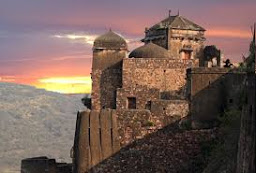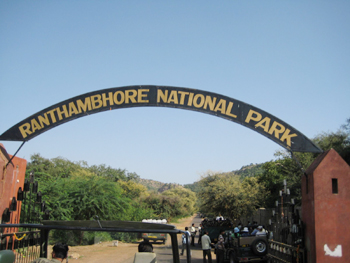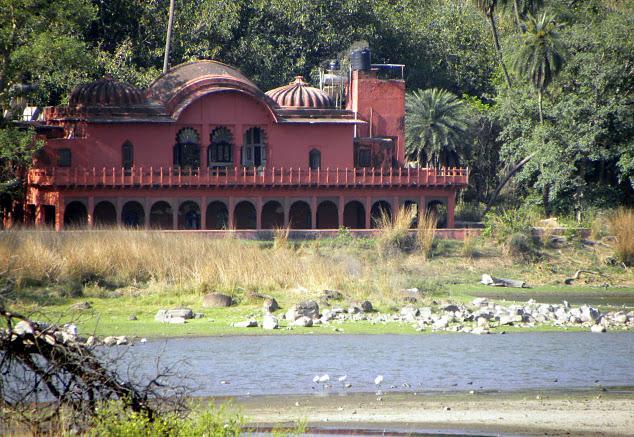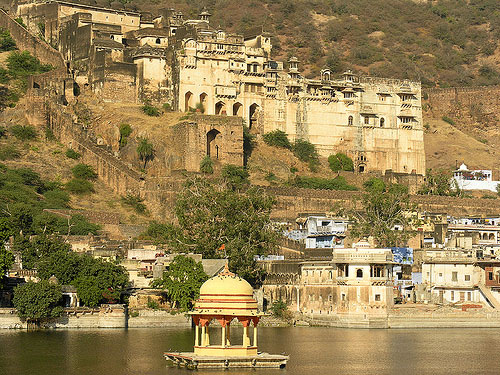Best of India Tours
- Golden Triangle Tour- Best of India & Nepal
- Classical Rajasthan
India Cultural Tours
- Images of North India- Karnataka Heritage
- Rajasthan & Goa Tour
Discover India Tours
- Grand India Tour- North to South India
- Central to South India
Rajasthan Tours
- Classical Rajasthan Tour- Golden Triangle Tour
- Grand Mughal Tour
India Luxury Trains
- Palace on Wheels- The Golden Chariot
- India Deccan Odyssey
- The Indian Maharaja
- Royal Rajasthan on Wheels
Nepal Tours
- Glimpses of Nepal- Buddhist Pilgrimage
- Nepal River Rafting
- Destinations of Nepal
- Nepal General Info
India Wildlife Tours
- North India Wild Life- South India Wildlife
Tibet Tours
- Tibet Monastery Tours- Explore Tibet
- Destinations of Tibet
Spa & Yoga Tours
- Ananda in Himalayas- Yoga & Meditation
Adventure Tours
- Manali Safari Tour- Himalayan Trekking
- Horse Safari
Ranthambore
Ajmer
![]() Alwar
Alwar
![]() Bharatpur
Bharatpur
![]() Bijaipur
Bijaipur
![]() Bikaner
Bikaner
![]() Bissau
Bissau
![]() Bundi
Bundi
![]() Deogarh
Deogarh
![]() Jaipur
Jaipur
![]() Jaisalmer
Jaisalmer
![]() Jalore
Jalore
![]() Jodhpur
Jodhpur
![]() Kota
Kota
![]() Mount Abu
Mount Abu
![]() Pushkar
Pushkar
![]() Ranthambore
Ranthambore
![]() Sariska
Sariska
![]() Shekhawati
Shekhawati
![]() Udaipur
Udaipur

Ranthambore is one of the many famous destinations of the western state of India, Rajasthan. Generally a visit to Ranthambore means a visit to the tiger reserve here. However, the place has much more to offer you in sightseeing and excursions. Surrounded by the Vindhya and Aravali hill ranges and located very near to the outer fringes of the Thar Desert, Ranthambore offers you the best of the desert land as well as plain area near the hills. Due to its proximity to the Thar desert, the vegetation here is that of deciduous forest. Ranthambore used to be the hunting ground of the Maharaja of Jaipur.
Later it was declared as a game sanctuary in 1955. In 1980, it was declared as a national park and listed among the reserves protected under Project Tiger.Ranthambore is also considered to be the best place in the world to photograph the tiger in its natural habitat. In Ranthambore you can indulge in any of the adventurous activities that the park offers. A Jeep Safari, a cultural and traditional experience of the Meena tribes, a night out in the many hideouts in the park are some of the options you must not miss.
Sightseeing
There are many interesting spots for you to see in Ranthambore. The park is regarded as the most suitable place for wildlife photography in the world. Here you can capture the tiger in its various moods and moments. Besides the Ranthambore Park, there are places like the Ranthambore Fort (one of it’s kind in the entire state of Rajasthan), Jogi Mahal (the wonderful forest guest house) and the various species of flora and fauna which are also worth a look. While in Ranthambore you can also get the feel of local customs and traditions of the region. A Jeep safari followed by the dinner consisting of the region’s delicacies is an experience not to be missed.
Excursions
To have a good idea of the place and its past, an excursion to the nearby places of historical importance is a must. Apart from the historical witnesses of time, these places have much more to offer to make your visit a complete one. Sawai Madhopur village, which is the entry point to many of the nearby important destination is one of its kind. The village is known for its many historical monuments and related legends that you can find in these small and big structures. Karauli is another place famous for its temples and architectural marvels. Likewise, Bundi, Kota and Tonk are the three other important paces to visit during your excursion. The places assume importance because of their historical significance, many beautiful gardens, temples and the cross cultural influence present in these places due to various invasions and settling of a different communities here.
Excursions for Ranthambore
Park
The park, which is one of the finest tiger reserves in the country is the main attraction of Ranthambore. Spread over an area of 392 sq. km the park is characterised by dry deciduous forests sprawling over the Aravalli and Vindhyan ranges. If you are fortunate enough you can also see the tiger strolling in the jungle or near any of the three lakes namely, the Padam Talab, Raj Bagh Talab and Milak Talab. The park also houses some of the rare species of desert creature like the sambhar, chital, nilgai, chinkara, langur, wild boar and peafowl. The park was one of the places visited by the former U.S. President Bill Clinton during his visit to India.

Ranthambore Fort

A visit to Ranthambore means a visit to the noteworthy Ranthambore fort too. The fort was built by the Chauhan rulers in the 10th century and is regarded as one of the oldest forts of Rajasthan. Due to its strategic location, the fort was ideal to keep the enemy at bay. The fort is also related to the historical legend of the royal women performing jauhar(self immolation) when the Muslim invader Ala-ud-din Khilji laid siege on this fort in 1303. The fort is characterised by temples, tanks, massive gates and huge walls.
Jogi Mahal
The Jogi Mahal makes a must visit place in Ranthambore. It is the forest rest house that overlooks the pretty Padam Talab. The Mahal lies close to the park and has all the facilities for a comfortable stay. The most important aspect of Jogi Mahal that attracts a large number of tourists every year is the ancient banyan tree which is believed to be the second largest banyan tree in India.

Natural Wealth

Ranthambore is characterised by the typical desert land of Rajasthan. The park here is the natural habitat of a sizeable number of panthers. Due to the considerable population of the tigers in the Ranthambore national park, the site has been taken under project tiger. The flora of the place is characterised by dry deciduous shrubs and not so high trees. However the topography varies in some places from secure forests to open scrublands. Dhok is the most prominent tree that you can find here. The aquatic flora in Ranthambore includes lovely lotus flowers and water lilies. In fauna, Ranthambore makes the natural habitat of some of the mammalian species like the antelopes, nilgai, sambhar, chital, sloth bear, wild boar, chinkara, porcupines, jackals, leopards, jungle cats, fox, caracals, hyena, gazelle, Indian hare, and mongoose. You can also find about 264 species of birds here.
Bundi
Surrounded by the Aravalli hills on three sides, Bundi lies at a distance of 36 km from Kota. This tiny picturesque town was once a part of Kota and was ruled by the Hada Chauhans—an offshoot of the famous Chauhan clan that ruled Delhi and Ajmer. The Rajput legacy of the town has been well preserved in the massive fort. Besides the fort, the palaces, havelis, temples with beautiful stone idols, and chattris with carved pillars are some of the interesting monuments to see here. The picturesque lake in the heart of the town adds to its charm. Bundi is also famous for its intricate carvings and murals.

Kota

Located at a distance of 100 kilometres from Ranthambore, Kota is another important place to visit during your excursion from Ranthambore. Kota used to be an important part of the erstwhile Rajput kingdom of Bundi. It became a separate princely state during the 17th century. The glory of those times could be seen in the several monuments, palaces and gardens that exist here. Located on the eastern bank of Chambal River, Kota has number of sites to visit and see. The city fort and palace, Kota Barrage, the Kishore Sagar tank (which was built in 1346), the Jagmandir palace (built on a small island at the centre of a tank in 1740), the Brij Vilas Palace Museum, the Chambal gardens and Chhattar Bilas gardens with its number of royal cenotaphs are some of the places you can visit in Kota.
Karauli
Founded in 1348 AD, Karauli is a city characterised by red sandstone walls, bastions, peripheral wall, six gates, eleven posterns and the famous annual fair at the Kaila Devi temple. Located at a distance of 160 kilometres from Jaipur, Karauli is a must visit excursion destination. Blended with history of the Rajputs, Karauli was known as Kalyanpuri after the local deity Kalyanji. According to a local legend, the ruling family of Karauli, known as Yadhuvanshi Rajputs, are the descendants of Lord Krishna. Besides other historic monuments, the temple of Madan Mohanji is an interesting place to visit in Karauli.
Sawai Madhopur Village
Located just 12 kilometres away from Ranthambore, Sawai Madhopur is one of the major excursion destination here. However if you are visiting Ranthambore by the Delhi-Mumbai railway route, the village of Sawai Madhopur falls in the middle of the road making it the gateway to the Park. Sawai Madhopur has always been the centre of attraction of the Rajput rulers. The town has many historic legends attached to it.
Tonk
Located at a distance of 100 kilometres from Ranthambore, Tonk is an old town dating to the middle of the 17th century. Resurrecting a forgotten era, Tonk makes a must visit itinerary in your excursion from Ranthambore. As the small town used to be the stronghold of the Pathan tribesmen of Afghanistan, Tonk is characterised by the Sunehri Kothi with its intricate mirror work and colourful medley of painted mosques, mansions and colonial buildings.
Fact File
 Area: 1,334 sq. km (gross area)
Area: 1,334 sq. km (gross area)
 Altitude :500 m above sea level
Altitude :500 m above sea level
 Best Time to Visit: October- February
Best Time to Visit: October- February
 Languages: Hindi, Rajasthani, English
Languages: Hindi, Rajasthani, English
 STD Code:07462
STD Code:07462




